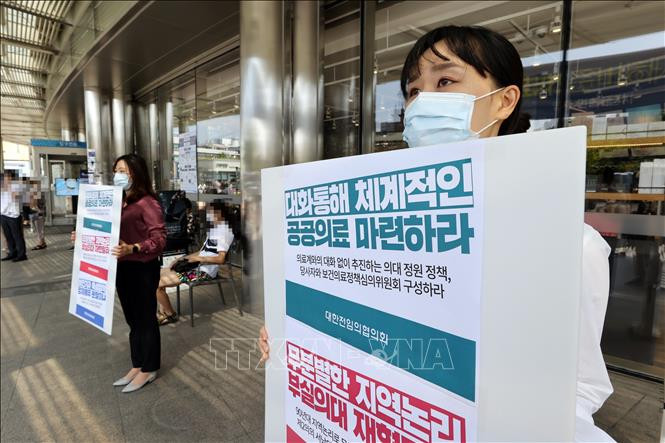A prolonged strike by trainee doctors has disrupted operations, costing major South Korean hospitals billions of won a day.

The strike, which has lasted for more than three weeks, has severely affected five major general hospitals in Seoul, including Seoul National University Hospital (SNUH) and Asan Medical Center. Both SNUH and Asan Medical Center have seen their revenues drop by about 1 billion won ($751,868) a day due to the strikes, and SNUH recently doubled its bank credit limit to 100 billion won. In addition, struggling private general hospitals have also sought government support. An official from the Ministry of Education said the ministry has received proposals from some private university hospitals to expand the government's loan program for private universities.
Currently, the Korea School Development Fund of the Ministry of Education is managing a 60 billion won loan program to finance construction projects or purchase medical facilities and equipment for private university hospitals. The program's annual interest rate is 2.67 percent, much lower than the market rate of about 5.22 percent. However, the official said the government cannot immediately approve the request because it involves a capital budget that requires consultation with the Ministry of Finance.
In this context, some general hospitals nationwide have introduced unpaid leave programs and accepted job applications from non-physician staff, such as nurses and staff in the hospital's administrative or technical departments.
Other large hospitals have been forced to reduce health care services by merging separate departments or downsizing the operations of departments.
Meanwhile, on the same day, the South Korean government convened a meeting of the committee responsible for allocating 2,000 medical school admission quotas to universities, thereby speeding up the process despite protests from medical interns.
The Korean government did not disclose information about the committee members, as well as the time, location, and agenda of the meeting to ensure objectivity in the committee's decision-making process. The Korean government also plans to complete the allocation as early as the end of this month to announce the new quota levels, thereby helping schools prepare for the admission process for the 2025 school year.
Previously, 40 universities across South Korea requested to increase the enrollment quota to 3,401 new places in 2025, much higher than the government's plan to increase by 2,000 places and higher than the total annual spending of 3,058 places.
Under the government's plan, only 20 percent of the increased quota will be allocated to medical schools in and around Seoul, with the remainder allocated to schools in suburban areas of Seoul, in line with the plan's goal of increasing the quota to improve health care services in these areas.